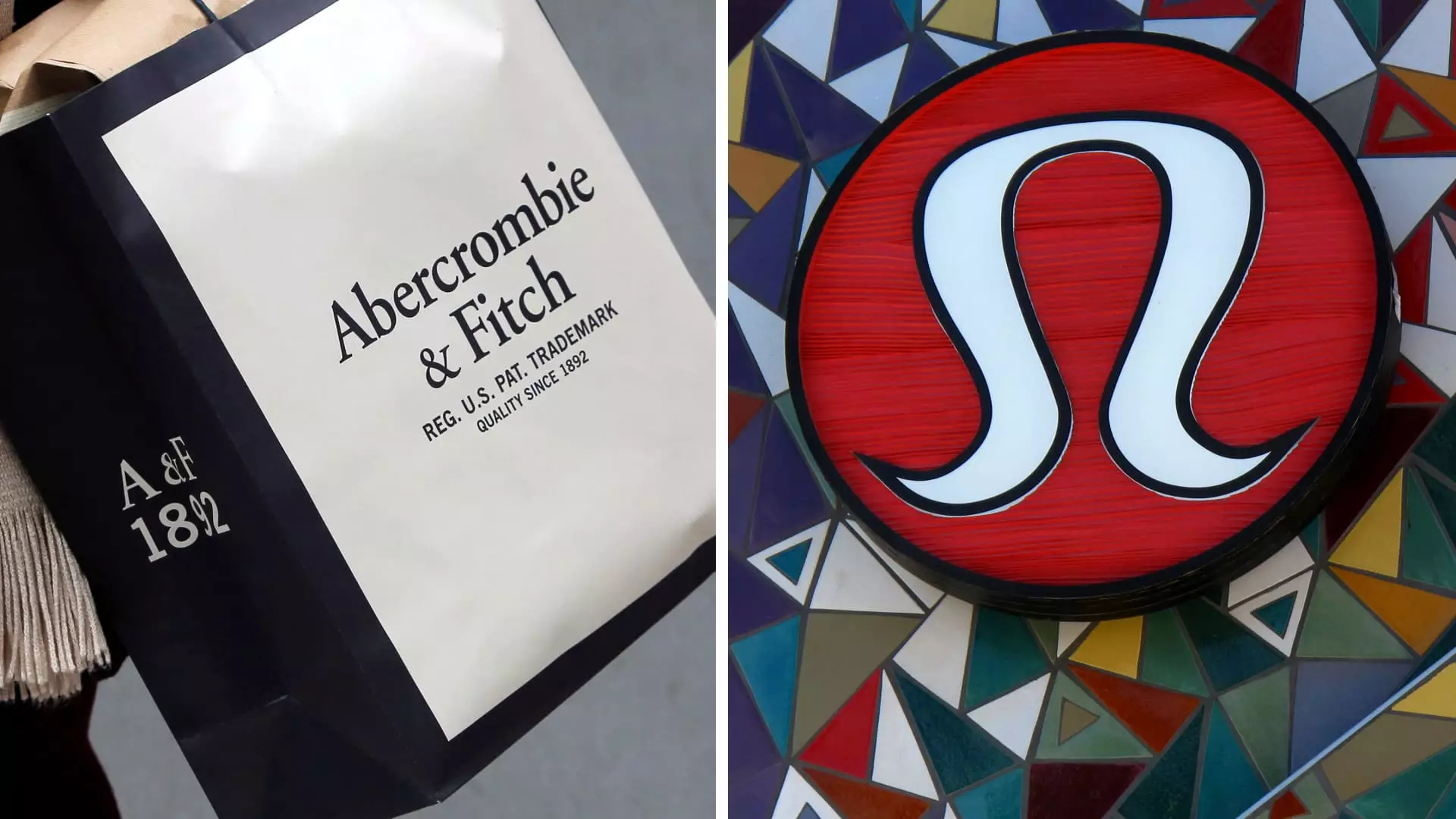As the holiday shopping season unfolds, major retail players have shared their early results, revealing a scenario that is both promising and troubling. Retailers such as Lululemon, Abercrombie & Fitch, and American Eagle presented forecasts that surpassed analysts’ expectations based on robust consumer interest during this critical shopping period. Urban Outfitters also reported significant growth; however, a noter of caution was struck by Macy’s, which indicated that its holiday quarter was not progressing as anticipated. This juxtaposition of strong forecasts alongside disappointing expectations stirred mixed reactions on Wall Street, leading to a decline in stock prices for many of these retailers, some by over 5%.
A notable drop was seen in Abercrombie’s shares, which plummeted nearly 17%. Such a significant fall can often indicate investor anxiety regarding the sustainability of growth trajectories, particularly after a period marked by impressive gains. Hence, whilst some retail giants projected an optimistic outlook for the fourth quarter, the market responded with skepticism.
Lululemon has adjusted its sales growth expectations, now forecasting a range of 11% to 12%, positioning anticipated revenues between $3.56 billion and $3.58 billion. This adjustment marks an increase from previous predictions and signals confidence in its product offerings during the holiday rush. In addition to revenue forecasts, the company has also raised its profit expectations, expecting earnings per share to range between $5.81 and $5.85—an encouraging sign that reflects growing consumer enthusiasm toward its brand offerings.
In contrast, Abercrombie has nudged its sales growth outlook to between 7% and 8%, up from the previous 5%-7% range. Despite this slight uplift, it does not reach the heady numbers the brand reported last holiday season, raising questions regarding the light on future growth. Investors who had previously seen Abercrombie as a growth story now find themselves grappling with the inevitability of maturation in retail cycles, leading to a much blander growth trajectory than before.
The CEO of Abercrombie, Fran Horowitz, appeared optimistic about the brand’s capabilities, emphasizing a strategic pivot towards enhancing profit margins rather than merely focusing on sales. His sentiments reflect a broader consideration among retailers to sustain value creation for shareholders in a climate of slowing growth.
Contextualizing the Retail Landscape
The implications of the retailers’ guidance come at a time when the annual ICR conference gathers industry leaders, analysts, and investors. This event typically provides a platform for retailers to disclose their holiday results and orientations moving forward, setting sentiments as the new year approaches. While some retailers showcased promising gains, the disappointing expectations from others, particularly Macy’s, indicated a larger oversight concerning consumer sentiment and spending patterns.
Macy’s is forecasting sales will align with, or slightly fall below, earlier projections. This downward adjustment reflects the retailer’s struggle to capture consumer interest amidst evolving market dynamics, leading to a 6% fall in its stock, which signals growing concern among investors regarding the sustainability of retail performance in a potentially jittery economy.
Urban Outfitters reported a commendable 10% year-on-year growth in net sales during December. Despite this positive indicator, heights of share performance were not obtained—indicating perhaps a cautious optimism among investors. The company’s diversified brands appear to perform unevenly, with dynamics fluctuating within their different retail segments.
In examining the broader retail landscape this holiday season, it becomes apparent that the increase in consumer spending is straddled by economic uncertainties. With inflation, changing consumer behaviors, and the residual effects of the pandemic on retail patterns, growth expectations remain tempered. The National Retail Federation’s predictions, ranging from a modest 2.5% to 3.5% growth, also encapsulate the industry’s cautious outlook.
Despite these overarching challenges, preliminary data indicates that the holiday sales season may yield results better than initial pessimistic projections, as evidenced by Mastercard SpendingPulse reporting a 3.8% rise in retail sales from November through December 24. Ultimately, as retailers navigate these uncertain waters, the next few weeks will be pivotal in shaping broader strategic choices as brands look towards not only recovery but sustainable growth into the following year.

